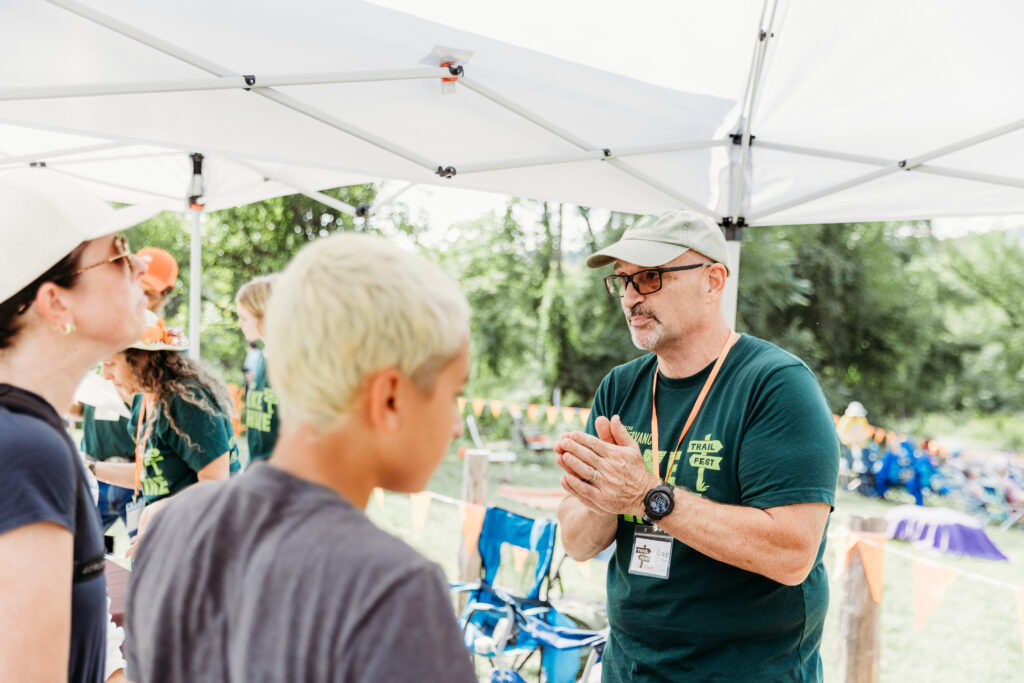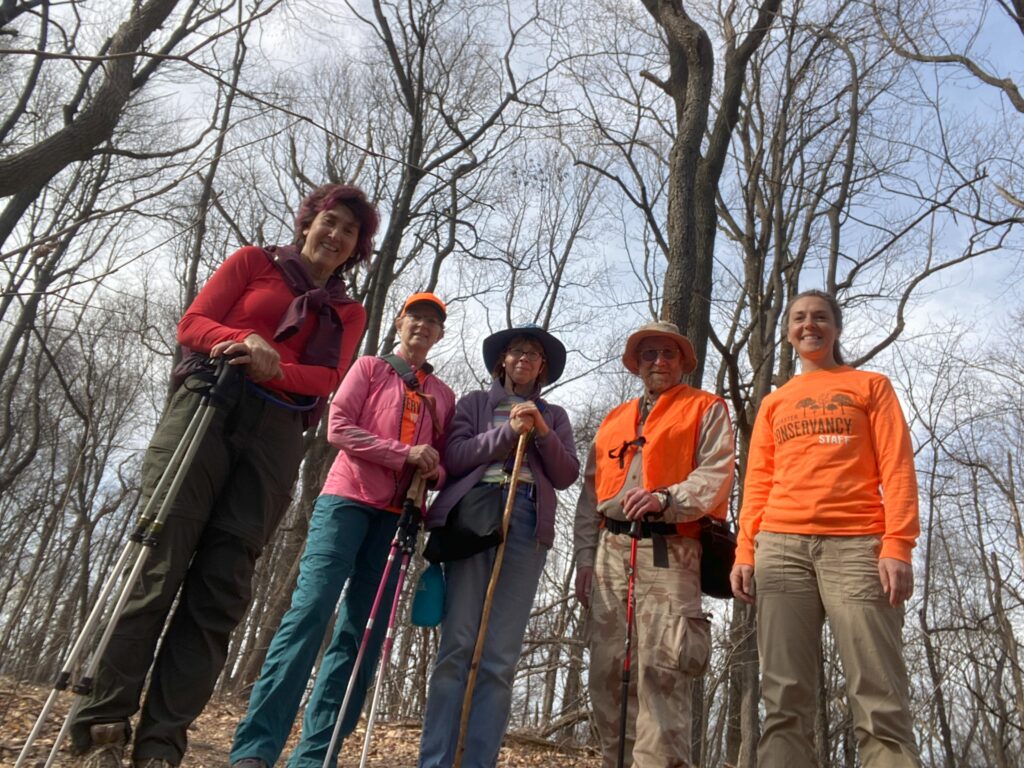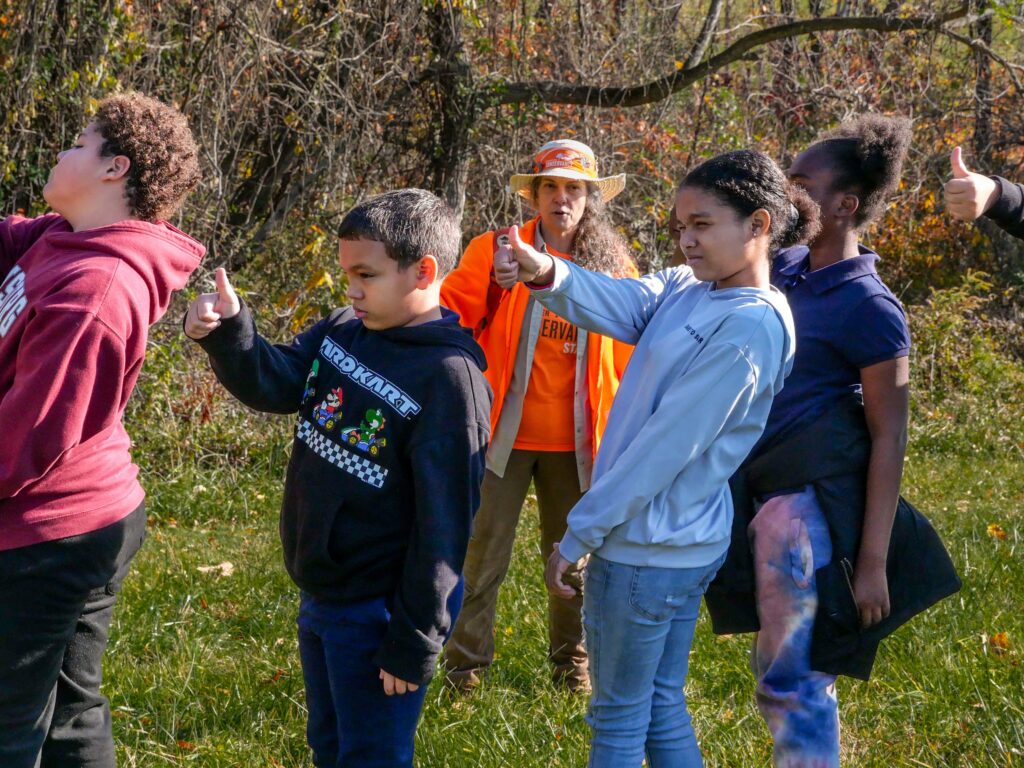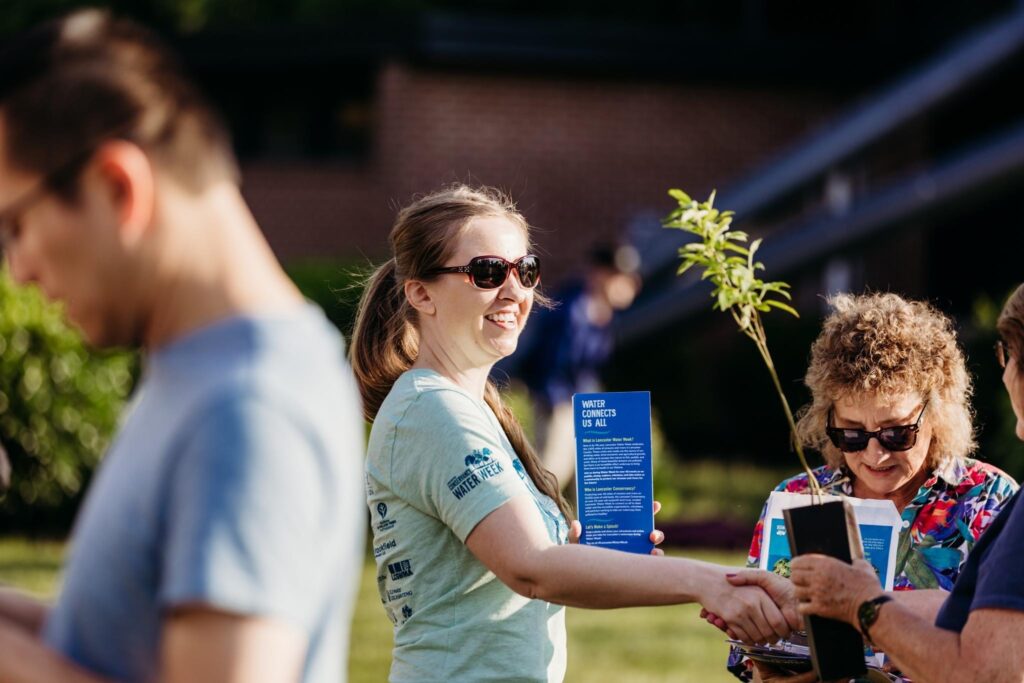Lancaster Conservancy’s seasonal Interpretive Rangers join our Engagement team to support educational programming and community outreach events from the spring through the fall. You might spot them leading interpretive hikes, handing out native wildflower seeds and preserve information at community events, or providing Leave No Trace education at popular nature preserves. These rangers significantly expand the Conservancy’s ability to offer conservation education programming and connect our community with nature.
Craig Lehman

Interpretive Ranger Craig Lehman provides hiking education during Trail Fest (Photo by Michelle Johnsen)
Craig is in his second season as an Interpretive Ranger with Lancaster Conservancy. He leads volunteer workdays and interpretive programs like hikes in addition to helping coordinate public outreach through events and tabling on Conservancy preserves.
A few experiences on Conservancy nature preserves that stand out for Craig are doing a night hike at Mill Creek Falls (occasionally the Conservancy hosts special nighttime events, although our preserves are typically closed from dusk to dawn), participating in a moth lighting at Welsh Mountain, and spotting bats.
Craig says his favorite part about this role with the Conservancy is “the opportunity to give back and make a difference.”
“Once you can identify invasive plants, you can’t unsee them. It really focuses your attention on the importance of the work that we do,” Craig says. “To quote the Grateful Dead, ‘there are things you can replace and others you cannot.’ Our natural and wild lands cannot be replaced. We must focus our collective efforts to preserve these special places.”
Kate Prisby

Interpretive Ranger Kate Prisby (right) leads an interpretive hike at Rannels Kettle Run Nature Preserve
Kate first became an Interpretive Ranger in 2023. She leads public educational programs and assists with K-12 school group conservation education.
“I enjoy sharing with others something that sparked my interest about our landscapes in Lancaster and York counties to help foster place-based connections,” Kate says.
The role of the Conservancy’s Interpretive Rangers has evolved over the past few years. They used to patrol the Conservancy’s nature preserves and would interact with the visitors they encountered. “I found that the questions folks had partway down trail were very different from the ones they asked at a table before their hike – questions that had to do with the ecology they were seeing, the why’s of Leave No Trace, and the history of the trail they were on,” Kate says. “I’ll try to think back on what kinds of questions I got when on patrol and integrate them into my programming.”
“I used to think of conservation in a much more limited fashion than I do now,” Kate says. “I’ve come to realize that conservation is more than my actions on a piece of land that I love. For me, it’s now seeing how my everyday actions impact land and nature. It’s knowing that the more things I buy locally, the more sustainably my food is raised, and the ways I care for the land where I live all have effects on the places that I love and go to when I’m looking to get outdoors.”
Mary Patterson

Interpretive Ranger Mary Patterson teaches students at Wizard Ranch Nature Preserve (Photo by Avery Van Etten)
Mary is in her second season as an Interpretive Ranger. She leads interpretive hikes and volunteer workdays, helps with K-12 conservation education school programs, and helps schedule and coordinate the Conservancy’s public educational events.
Mary says one of her favorite parts about her role at the Conservancy is, “when I see a member of the public group that I am working with make that awesome connection with nature.” She also enjoys hearing what attendees have learned at the end of events and sharing Leave No Trace principles, but she says ultimately, “by far my biggest delight is invoking the sense of wonderment and discovery in people.” (Plus, she notes, it feels great to safely complete a challenging group hike.)
Mary encourages others to “never stop observing and learning. Get involved in whatever way you can.”
Rachel Haynes

Interpretive Ranger Rachel Haynes distributes native trees during Lancaster Water Week (Photo by Michelle Johnsen)
Rachel has been an Interpretive Ranger for the past three years. Her role includes “recommending local trails, sharing more accessible or more challenging routes, leading interpretive hikes, and occasionally cleaning up wet diapers creek-side,” she explains. (Friendly reminder to please practice Leave No Trace and properly remove and dispose of all waste when enjoying the outdoors!)
Her favorite part about being an Interpretive Ranger at the Conservancy is “listening to members of our community and connecting with them on what their unique needs might be in order to live their best life outdoors. Each day I spark up a conversation with a stranger, whether with one or with hundreds, I learn something new and am grateful I am given the opportunity to see the world through a different lens.”
Working in this role, Rachel says she has learned “how nature can be the ultimate equalizer, and no matter what everyone may be going through individually, when you work as a team, whether it’s to conquer a hike, or debate trail routes, or pull invasive species, you are doing it together. No matter where you are from, what age you are, your economic status, or belief system, you are all together in the same place at the same time seeing the beauty of nature and human connection, often disconnected from anything else.”
Some of Rachel’s favorite moments on a Conservancy preserve are pulling invasive garlic mustard with volunteers at Shenks Ferry while balancing on steep slopes and “giggling about whatever all day long amongst the wildflowers.” She says, “In those moments life is simple, observational, and nurturing amongst friends in the forest.”
